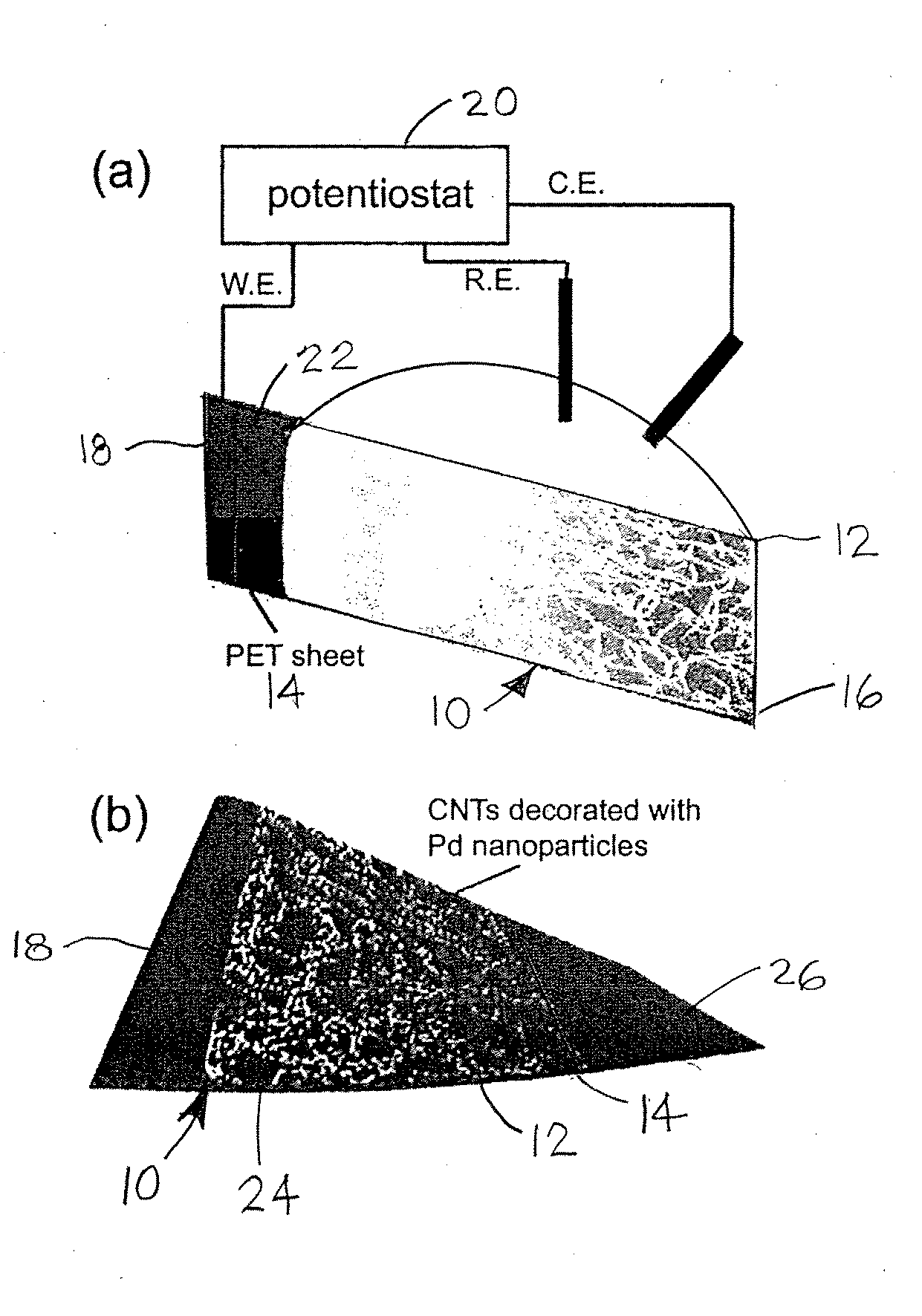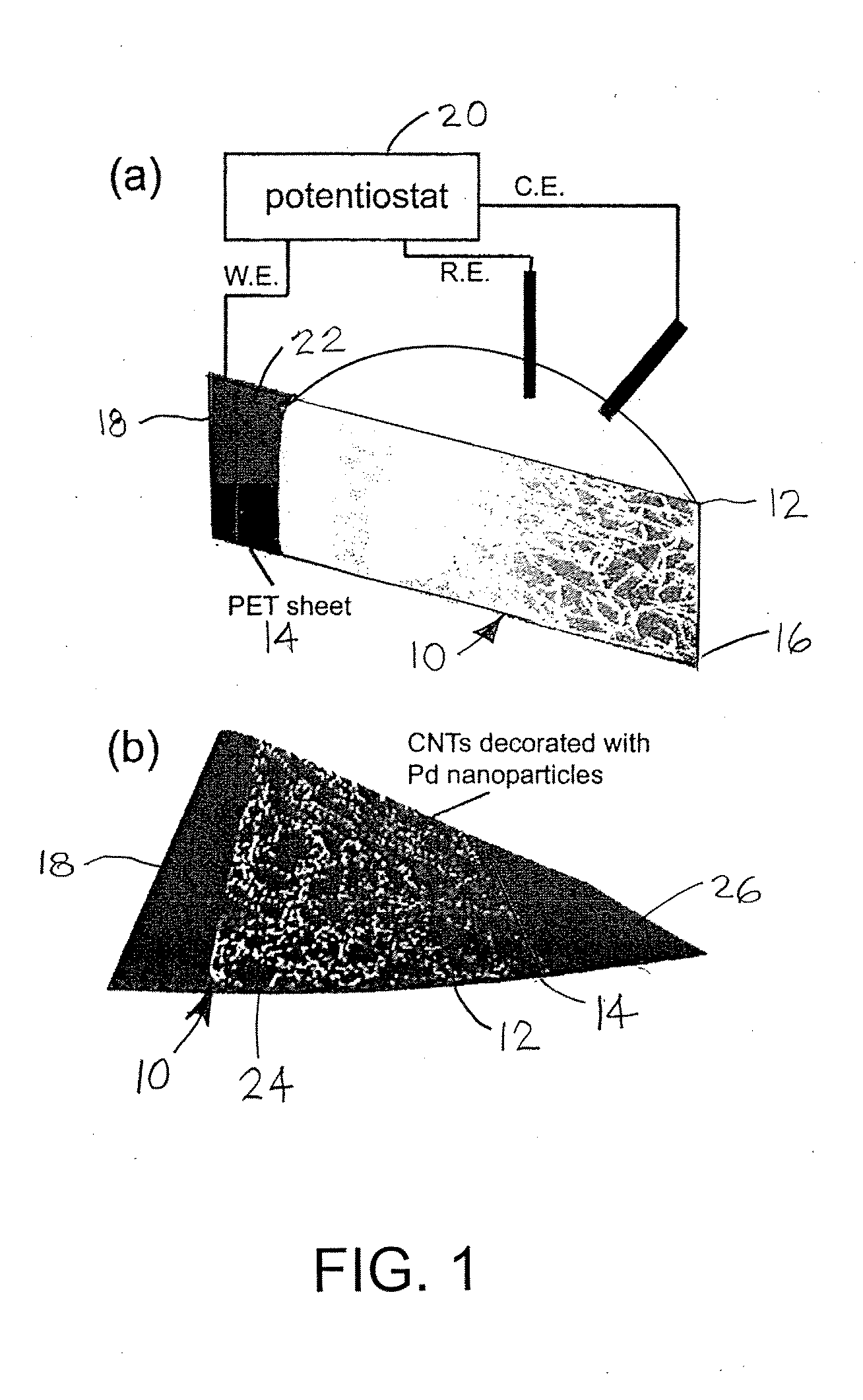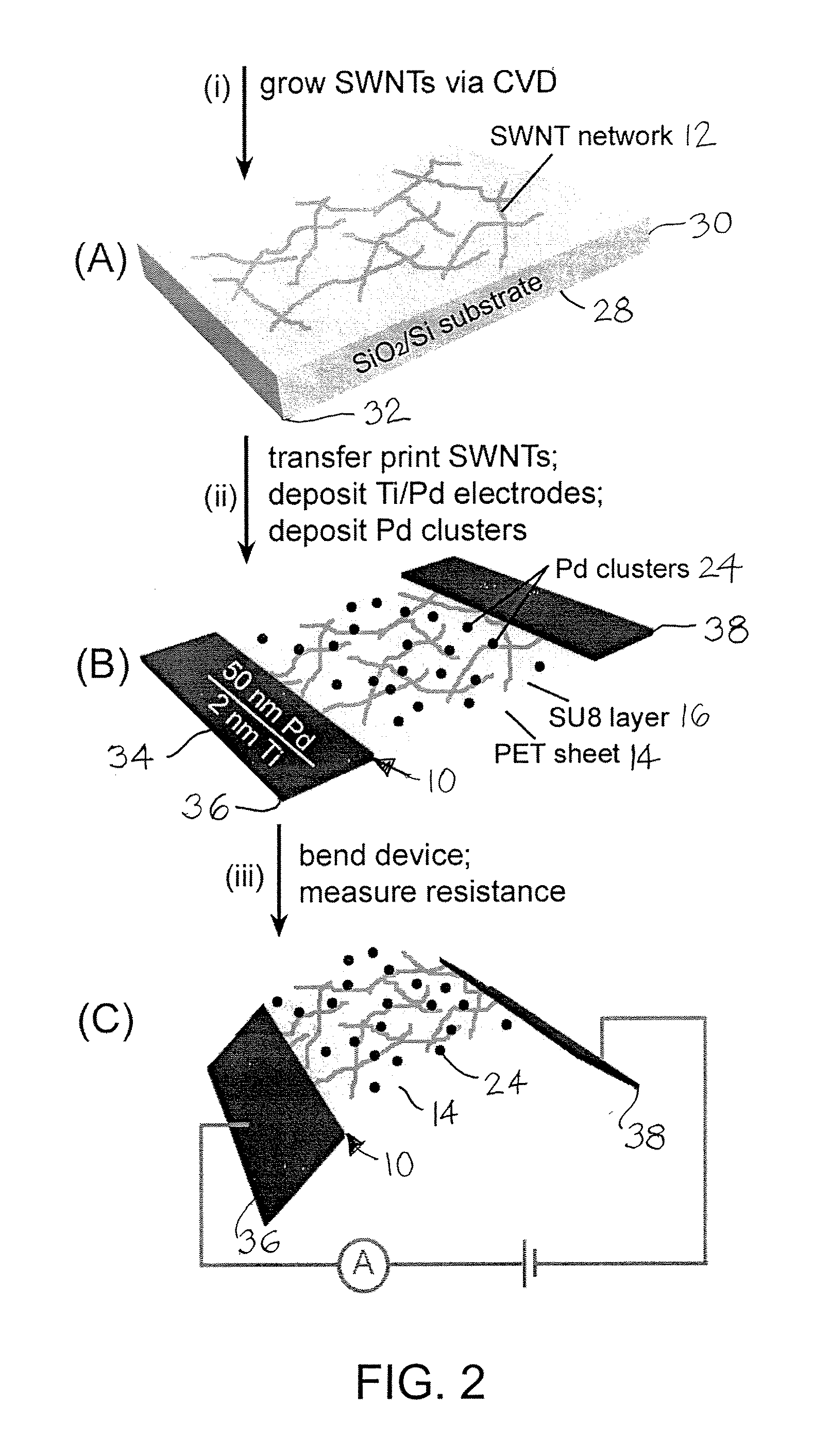High-Performance Flexible Hydrogen Sensors
a hydrogen sensor, flexible technology, applied in the direction of instruments, specific gravity measurement, manufacturing tools, etc., can solve the problems of rigid substrates, limit the application of portable devices, rigidity and/or fragility of traditional hydrogen sensors, etc., to achieve rapid response and recovery times, flexible and bendable, and readily conform to the contours of other structures
- Summary
- Abstract
- Description
- Claims
- Application Information
AI Technical Summary
Benefits of technology
Problems solved by technology
Method used
Image
Examples
Embodiment Construction
[0047]The following is a detailed description and explanation of the preferred embodiments of the invention and best modes for practicing the invention.
[0048]Single-walled carbon nanotubes (SWNTs) on thin plastic substrates can be decorated, fabricated, integrated and interspersed with palladium (Pd) nanoparticles through an electrochemical deposition process and used to fabricate high-performance hydrogen sensors with excellent mechanical flexibility. The use of single-walled carbon nanotubes for sensing technology is attractive because interactions between target molecules and SWNTs can significantly change the electronic properties (e.g., capacitance, resistance, etc.) of SWNTs. Chemical sensors on the basis of change in resistance, also called chemiresistors, can be used to detect a wide range of species, such as nerve agents, explosives, environmental pollutants, and hydrogen, with high sensitivities. Hydrogen (H2) represents an important energy carrier among these chemical spe...
PUM
| Property | Measurement | Unit |
|---|---|---|
| temperatures | aaaaa | aaaaa |
| temperatures | aaaaa | aaaaa |
| width | aaaaa | aaaaa |
Abstract
Description
Claims
Application Information
 Login to View More
Login to View More - R&D
- Intellectual Property
- Life Sciences
- Materials
- Tech Scout
- Unparalleled Data Quality
- Higher Quality Content
- 60% Fewer Hallucinations
Browse by: Latest US Patents, China's latest patents, Technical Efficacy Thesaurus, Application Domain, Technology Topic, Popular Technical Reports.
© 2025 PatSnap. All rights reserved.Legal|Privacy policy|Modern Slavery Act Transparency Statement|Sitemap|About US| Contact US: help@patsnap.com



